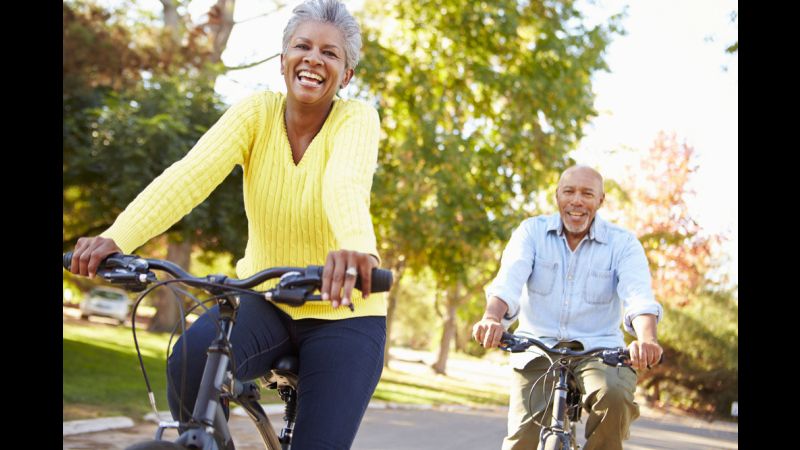It’s no secret that active adults are healthier and live longer than their sedentary counterparts. But is it possible that certain exercises can be more beneficial than others when it comes to longevity? A new study from researchers in England suggests that cycling could be the key to staying young.
The Research
The study, which was published in the Journal of Physiology, was performed by researchers at University of Birmingham and The King’s College of London and examined both male and female volunteers between the ages of 55 and 79. All of the participants in the study were already cycling enthusiasts, able to ride 100 kilometers, or a little over 62 miles in under 6.5 hours. Smokers, heavy drinkers and those with high blood pressure or a history of cardiovascular disease were excluded from the study.
The goal of the study was to “explore how the aging process affects the human body, and whether specific physiological markers can be used to determine your age.” Researchers compiled a complete physiological profile for each participant, which measured their health in different categories including cardiovascular, metabolic, endocrine, bone strength and cognitive functions, among others. Unfortunately, the researchers found that there is no special formula for being able to identify age through physiological markers, concluding that aging is actually a highly individualized experience.
They did, however, find that remaining active can keep you feeling younger. An active lifestyle can also help to prevent falls in older adults. Part of their test involved balance function, which they gauged by having the participants start by sitting in a chair, stand up, walk about ten feet and turn around to return to the chair and sit again. Even the oldest participants in the study performed better than the average person their age, proving that remaining active can play a key role in keeping you on your toes as you age.
“Inevitably, our bodies will experience some decline with age, but staying physically active can buy you extra years of function compared to sedentary people,” said Norman Lazarus, a Professor Emeritus and member of the King’s research team (and also a cyclist). “Cycling not only keeps you mentally alert, but requires the vigorous use of many of the body’s key systems, such as your muscles, heart and lungs which you need for maintaining health and for reducing the risks associated with numerous diseases.”
Get Moving
Interested in integrating cycling into your workout? If you don’t live in an area that’s conducive to outdoor biking, you might want to consider trying spin classes. Many gyms and cycling studios now offer classes geared towards seniors.
Spin classes are always indoors, on stationary bikes. This means you’ll never have to worry about being off-balance! It’s also an ideal workout for older adults because of the low impact on joints and high cardiovascular payoff. Classes typically run from 45-60 minutes and on average burn anywhere between 400 and 600 calories per class.
In the words of Professor Stephen Harridge, the Director of the Center of Human & Aerospace Physiological Sciences at King’s College London: “Because most of the population is largely sedentary, the tendency is to assume that inactivity is the inevitable condition for humans. However, given that our genetic inheritance stems from a period when high levels of physical activity were the likely norm, being physically active should be considered to play an essential role in maintaining health and wellbeing throughout life.”

